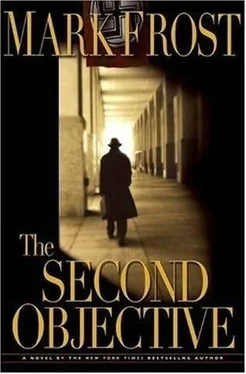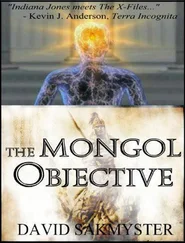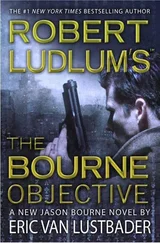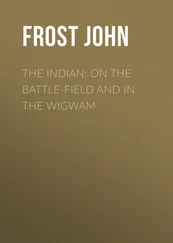“In spite of his Jewish blood.”
“The mother’s line was pure Aryan, so he’s only one eighth, slightly more than twelve percent. In special cases one can argue the Aryan blood is more dominant. For all that, he seems determined to eradicate his father’s heritage. The lieutenant’s creativity at Dachau has been nothing less than astonishing.”
Skorzeny knew about the extermination program at Dachau and other death camps, but offered no comment. Senior officers working at a remove from the Final Solution never discussed what they knew in any way that required expressing an opinion. Stielau interpreted his silence as disapproval.
“In any case, since he is of such concern to you,” said Stielau, “we’ll have the man executed tomorrow.”
“No, Stielau, you miss my point entirely. He’s perfect.”
“If I may ask, in what way, sir?”
“It’s all very well to send our little brigade across enemy lines. If the stars align, and we catch them napping, there’s even a slight chance we might succeed.”
“Sir, I think you’re discounting a very good chance we might change the course of the war-”
“I appreciate your enthusiasm, Captain Stielau, and your devotion to our cause. But realism is the harshest discipline. The longer view suggests that a bleak future awaits us all, regardless of our interim efforts.”
Stielau said nothing, and Skorzeny instantly regretted his frankness.
“We are soldiers, nevertheless,” said Skorzeny, closing Von Leinsdorf’s dossier. “We play the hand we are dealt. And this man could turn out to be a wild card.”
Bernie saw the change in Von Leinsdorf as soon as he returned to the barracks. A hard set in his eyes, jaw taut. He recruited his first two squad leaders that same night: a fellow SS officer, Unterstürmführer Gerhard Bremer, and an Army Intelligence translator named Karl Heinz Schmidt. Bernie watched these conversations take place. When Von Leinsdorf returned to his bunk, Bernie asked what was going on but got no answer. He’s following new orders, thought Bernie. From Skorzeny himself .
Von Leinsdorf recruited his third squad leader the next morning, the former American Army sergeant William Sharper. After four years as a GI in North Africa and France, Sharper had deserted to the Wehrmacht three months earlier after beating his superior officer half to death during a barracks poker game. He’d spent those months in the custody of German Intelligence, before being cleared and released for this mission. Von Leinsdorf sized up Sharper as a working-class hooligan, more suited to life as a Nazi storm trooper than in the conformist U.S. Army. He authorized each of the three men to recruit his own four-man squad. When Karl Schmidt pressed for details about this “second objective,” Von Leinsdorf said it had to remain classified until the night before the mission.
That night Von Leinsdorf asked Bernie Oster to join his squad, along with a middle-aged merchant seaman named Marius Schieff and a former bank clerk from Vienna named Gunther Preuss, both Category Two men. Von Leinsdorf told them nothing about what the new assignment involved, but it was clear to Bernie that his status within the brigade had changed for the worse. He no longer feared discovery for what he’d done in Berlin. The path Von Leinsdorf was leading him down now felt far more dangerous.
A week before the launch, Otto Skorzeny attended a final briefing with the Army General Staff at the Reich Chancellery in Berlin. Skorzeny walked through his brigade’s role in the invasion, and they agreed on procedures to protect his commandos from German attack. His disguised American tanks would bear two yellow triangles within the unit insignia stenciled onto their armor. If any regular Wehrmacht and commando units met on the battlefield during daylight, the men of Operation Greif were to remove their American helmets and hold them over their heads. At night, when encountering regulation German forces, they were to use pistol-fired flares, known as Verey lights, to reveal their identities.
Skorzeny was told that weather forecasts for their target day appeared favorable, calling for heavy cloud cover that neutralized Allied air superiority. All signals were go.
The counteroffensive into Belgium and Luxembourg known as Operation Autumn Mist would begin at dawn on December 16.
Grafenwöhr
DECEMBER 10, 1944
Shortly after dark on December 10, the men of Operation Greif left their camp at Grafenwöhr and loaded onto a special transport train. Bernie saw that the cars had been camouflaged to resemble a shipment of Christmas trees being de livered to troops along the Western Front. Their vehicles, freshly painted and accessorized as American, were loaded on covered flatbeds at the rear of the train. Outfitted in their GI uniforms, Skorzeny’s men were not allowed to leave the crowded boxcars during the two-day journey. A Gestapo detachment came on board to protect the train and deflect questions from outsiders about its secret manifest. Bernie knew the heavily armed Gestapo was also there to prevent any of the brigade from deserting.
The 150th Panzer Brigade detrained just before midnight on December 12 near an infantry training grounds at Wahn, southwest of Cologne, where they quartered for the night. To avoid contact with regular Wehrmacht units, they remained confined to the buildings throughout the following day. That night, under blackout conditions, the brigade convoyed in their own vehicles to the town of Münstereifel, twenty miles closer to the Belgian border. Stielau’s commando group continued ten miles farther west, near the town of Stadtkyll. During that trip, camouflage netting slipped from a half-track in front of Bernie’s transport, revealing its white five-pointed Allied star. A Wehrmacht patrol tried to intercept what appeared to be a column of American vehicles. They were taken into custody by the Gestapo escort and weren’t seen again.
The commandos spent the rest of the night around a remote forester’s cottage, organizing into their patrol units and receiving fuel, ammunition, and last-minute supplies. As dawn approached, Bernie could make out the vast bunkers and ramparts of the German Western Wall. Since their arrival at Wahn, he had caught glimpses around the border of a massive Wehrmacht buildup that dwarfed their brigade.
At six A.M., Otto Skorzeny arrived and the company assembled outside the cottage. The only soldier present in German uniform, Skorzeny ordered them to circle around him, informally, in the American manner. He told them their appearance and manners reflected a complete and convincing transformation: They were GIs now. Shivering in the frigid predawn air, Bernie learned for the first time the full scope of Operation Autumn Mist, and their own primary objective. Not as bad as he’d feared, but he knew Von Leinsdorf had something far worse in store. Skorzeny tried to rally them with stories of the German Army’s long history of successes in the Ardennes, and how thinly it was now held by the Allies. He told them to be prudent about their use of gasoline, to scrounge any they could while in the field. They were to avoid at all costs any hostile engagement with the enemy.
“Every patrol must remain in radio contact with our corps command,” said Skorzeny. “Our mission depends on the intelligence you provide. Make note of everything you see and hear. Trust your training. Take no unnecessary risks.”
One man asked the question that was on all of their minds: “Will they treat us as spies if we’re captured?”
“I have consulted with experts on international law. If you are captured, we believe that if you wear your German uniform underneath, or change into it beforehand, you will be granted the same protection as any other prisoner of war.”
Читать дальше












